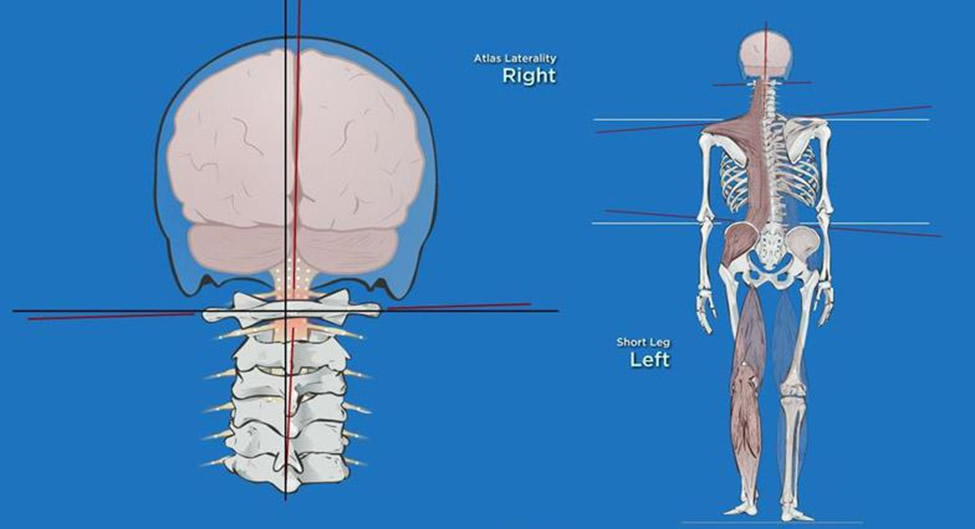 You may have had multiple visits to the chiropractor and you are beginning to wonder if you should continue. There could be multiple reasons for wondering if it is worth it.
You may have had multiple visits to the chiropractor and you are beginning to wonder if you should continue. There could be multiple reasons for wondering if it is worth it.
- Maybe you feel better now so why should you keep going? Is this a regular maintenance thing or should you just quit until your back or neck starts hurting again?
- Or maybe you don’t feel much better than you did when you started. So is it actually helping? How long does it take to work? How do you know if it’s working?
- Should you get a second opinion?
Like any sort of treatment, one needs to have realistic expectations for outcomes. Everyone’s body is different. Some people will see immediate results and think, “Eureka! I’m cured!” Others might have three or four visits and think, “This is totally not working… why am I spending money on treatment that isn’t working?”
It’s totally normal and natural to think these things – most of us do! But there is an inherent flaw in both lines of logic. Both are very subjective and take a very narrow view (is my immediate pain being relieved?) and not taking into account the bigger issues (is the underlying cause of my pain being addressed?).
As with any form of medical treatment, before you begin a spine care regime, it is important to set reasonable expectations. As a certified NUCCA chiropractor and credentialed spine care specialist, I will do a thorough examination of your spine and go over the evaluation with you and set reasonable expectations for recovery and further evaluation.
Likewise, with any form of medical treatment, outcomes and timelines for one person are going to be different for another. Our bodies and lifestyles are all different. Therefore, our outcomes and timelines for treatment are going to be very different.
Setting a Baseline for Your Condition
Evaluating whether a treatment program is working should be based upon establishing a baseline for your condition and reevaluating it on a periodic basis. This standard is used across most fields of medical research and treatment.
Okay, so how do we set a baseline?
The only way to know the correct treatment for your back pain is to first know the cause.
Back pain is typically caused by anatomical or mechanical factors. Only with a thorough orthopedic, neurological and biomechanical spine exam can your doctor differentiate the cause of your pain.
Proper imaging may also reveal the most appropriate course of action. Before you move forward with any treatment plan, it’s important to get an accurate diagnosis to see what exactly is causing your neck or back pain.
The problem could be from an anatomical source, such as a tumor, fracture or herniated disc. MRIs, CTs and static x-rays are best for identifying anatomical causes of pain. If it is determined that your pain is anatomical, we will refer you to an orthopedic surgeon or other spine specialist to further investigate.
The second source of pain is usually mechanical. Mechanical pain is best shown by static and/or motion x-rays. The American Medical Association (AMA) provides very specific guidelines for assessing and diagnosing mechanical sources of pain. At Precision Spinal Care, we follow these well-documented, evidence-based AMA guidelines to identify mechanical sources of pain.
Common Baselines for Back and Neck Pain
What are the subjective and objective baselines by which your neck and back pain are measured? The following is a list of the most common baselines:
Subjective Baselines
- Pain Severity (how bad is it?)
- Pain Frequency (how often is it?)
- Pain Threshold (what is your level of tolerance?)
- Activities of Daily Living (is your pain impeding your ability to enjoy your life?)
- ROM with Overpressure (what is your range of motion with light pressure to find the end range?)
- Active ROM (what is your range of motion without assistance?)
Objective Baselines
- Orthopedic Exams (has your pain been evaluated by a spine care specialist?)
- Orthopedic Measurements (has your spinal misalignment been measured?)
- Static x-ray Biomechanics (still imaging of your spine)
- Motion x-ray ligament Laxity (active or dynamic imaging of your spine)
Subjective Example:
Baseline
At the start of care, your pain, on a scale of 1 to 10, is an 8 out of 10 and it is constant. You can’t stand or walk more than 5 minutes at a time without severe pain.
Outcome
After 30 days of care, your pain is a 4 out of 10 at worst. It comes and goes, and you can walk 30 minutes at a time.
Objective Example:
Baseline:
Your spine care specialist measures your pelvic tilt and rotation. At the beginning of treatment, your pelvic tilt is 4 degrees and anterior rotation is 3 degrees.
Outcome:
After 30 days of chiropractic care, your spine care specialist measures your pelvic tilt and rotation. Your pelvis is level with 1 degree of anterior rotation.

Realistic Expectations for Spine Care
Measurable Outcomes
Your spinal care specialist should give you a prescribed period of care based upon a set number of visits or timeline. Medicare Guidelines recommend the reexamination of baselines approximately every 30 days. You and your doctor will want to know whether or not you have made an improvement.
With each reexamination the following questions should be answered:
- Is there reasonable improvement?
- Is there still room for improvement?
- Should different treatment options be considered?
- Should the frequency of treatment be altered?
- Should new images or tests be ordered?
- Should you be referred out for a second opinion?
- Is continued treatment still medically necessary?
How Long Should I Expect Treatment to Last?
How long treatment lasts depends upon your specific condition. Everyone’s body and situation is different. A typical scenario for treatment would be as follows:
Inflammatory Phase (within the first 72 hours of injury)
If you injure your neck or back and seek the care of your primary care physician or hospital emergency room within the first 72 hours of injury, they will most likely treat you with an anti-inflammatory or muscle relaxers, and rule out fractures or other serious pathologies.
Repair phase (8-12 weeks)
Evidence-based medical science indicates it takes 8 to 12 weeks to repair damaged spinal ligaments. Chiropractic care focuses on repair of damaged tissues of the spine. Therefore, it is reasonable to give chiropractic care 8 to 12 weeks with reevaluation of biomarkers every 30 days for objective as well as subjective markers.
Remodel Phase (after 12 weeks if necessary)
The goal of the remodel phase is to build strength and flexibility once the cause of the pain or injury has been repaired. This phase involves either self care at home, physical therapy, massage therapy, and/or chiropractic maintenance care (once a month or less).
Should You Continue Seeing Your Chiropractor?
Chiropractic offers an evidence-based approach to developing measurable outcomes for neck and back pain that focuses on the underlying cause of your pain. Remember, you are an active participant in your care, so make sure you:
- Have a proper evaluation by a credentialed spinal care specialist.
- Make sure the doctor reads images with you (x-rays, MRIs, etc.).
- Make sure you go over both subjective and objective baseline markers when you begin care so you can track your progress.
- Get a proper reevaluation after approximately 30 days.
- Evaluate the measurable outcomes, both subjective and objective, with your doctor.
- If repair is sufficient to move on to the remodeling phase, discuss with your doctor what that phase will look like.
- If repair is not sufficient within 30 days, discuss with your doctor what the next steps should be and what your options are.
At Precision Spinal Care, I will perform a thorough examination of you before any treatment is performed or prescribed. After a proper evaluation, I determine if chiropractic is a good option for you, and I will explain exactly what your personalized care plan would look like.
If it is determined that your neck or back pain is not mechanical, I will explain your condition and recommend the type of specialist who is most appropriate to help you.
We understand that you need to explore all your options when you look for expert chiropractic care and we are happy to help you determine the best way to address your specific needs.
Call our office at 757-382-5555 to speak with me or set up a consultation. You can also set up an appointment through our webpage.

